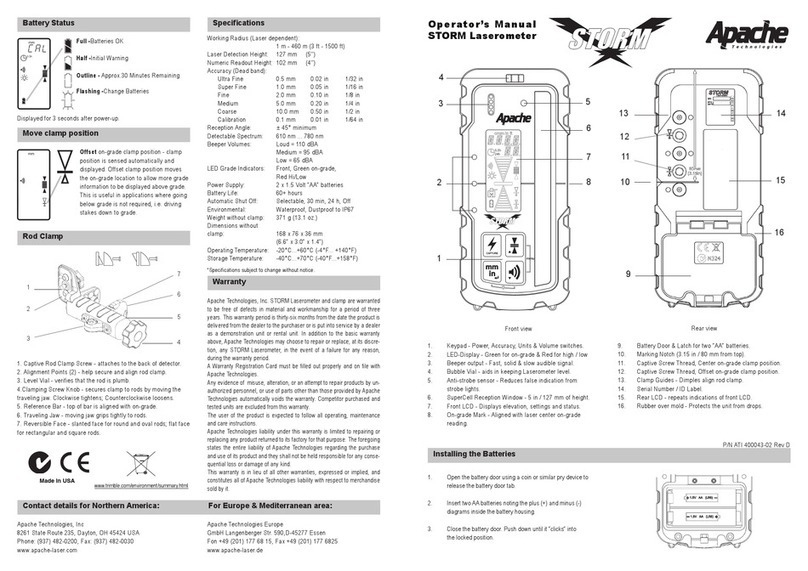Contents
HORIZON Laser System
System Description ...................................................................... 2
Features and Functions ................................................................ 2
Battery Installation ........................................................................ 4
Setting Up and Leveling the Laser ............................................... 4
Determining the Height of Instrument (HI) .................................... 5
Checking Calibration .................................................................... 6
Specifications ............................................................................... 8
Troubleshooting ............................................................................ 9
Maintenance and Care ................................................................ 10
Safety Information ........................................................................ 11
Warranty ..................................................................................... 12
EMC Declaration of Conformity .......................... Inside back cover
P/N ATI-200700 REV A
12
Warranty
Apache Technologies warrants the HORIZON laser to be free of defects in
material and workmanship for a period of two years. This warranty period is
in effect from the date the system is delivered to the purchaser, or is put into
service by a Dealer as a demonstrator or rental component. Please refer to the
detector operator's manual for detector warranty information.
The manufacturer or its Authorized Service Center will repair or replace, at its
option, any defective part of components of which notice has been given during
the warranty period. A Warranty Registration Card must be filled out properly and
on file with Service Department before warranty repair or replacement can be
approved. Travel and per diem expenses, if required, to and from the place where
repairs are made will be charged to the purchaser at the prevailing rates.
Customers should send products to the nearest Authorized Factory Service Center
for warranty repairs, freight prepaid. In countries with Service Subsidiary Centers,
the repaired products will be returned to the customer, freight prepaid.
Any evidence of negligent, abnormal use, accident, or any attempt to repair
equipment by other than certified factory-authorized personnel or recommended
parts, automatically voids the warranty.
Special precautions have been taken to ensure the calibration of the laser;
however, calibration is not covered by this warranty. Maintenance of the
calibration is the responsibility of the user.
The foregoing states the entire liability of the manufacturer regarding the purchase
and use of its equipment. The manufacturer will not be held responsible for any
consequential loss or damage of any kind.
This warranty is in lieu of all other warranties, except as set forth above,
including an implied warranty merchantability of fitness for a particular purpose,
is hereby disclaimed. This warranty is in lieu of all other warranties, expressed
or implied.
Notice to Our European Union Customers
For product recycling instructions and more information,
please go to: www.trimble.com/environment/summary.html
Recycling in Europe
To recycle Trimble WEEE, call: +31 497 53 2430,
and ask for the “WEEE associate,” or
mail a request for recycling instructions to:
Trimble Europe BV
c/o Menlo Worldwide Logistics
Meerheide 45
5521 DZ Eersel, NL


























